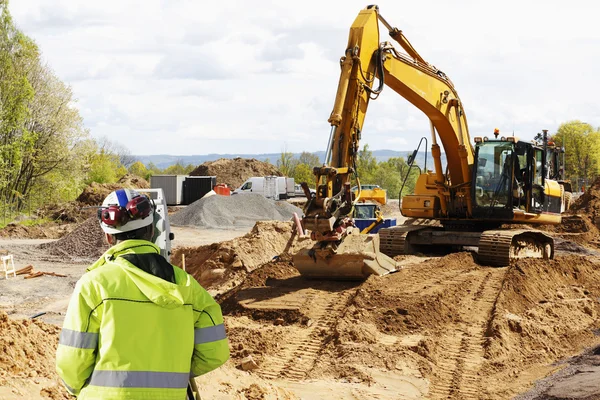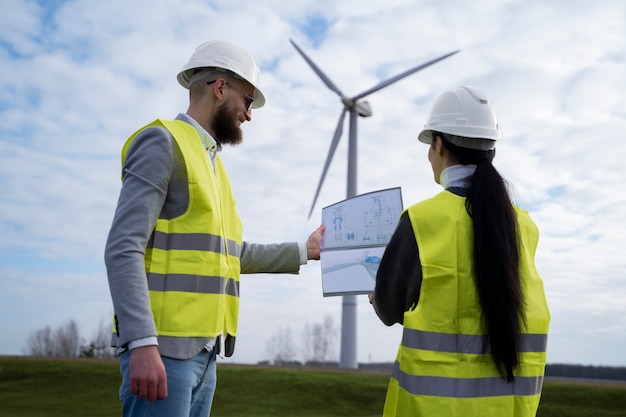Moving Forward: Next-Level Solutions In Phase 2 Environmental Site Assessment
Environmental Site Assessments (ESAs) are critical tools used to evaluate the environmental conditions of a property. They are essential for identifying potential contamination and assessing risks associated with property transactions, development projects, or regulatory compliance. Phase 2 Environmental Site Assessments delve deeper into the assessment process by conducting intrusive investigations to determine the extent of contamination identified in Phase 1 assessments. As environmental concerns become more complex, advancing to Phase 2 assessments requires next-level solutions to ensure thoroughness, accuracy, and compliance with regulatory standards.
Understanding Phase 2 Environmental Site Assessment
What is Phase 2 Environmental Site Assessment?
Phase 2 Environmental Site Assessment is the second stage of the ESA process, conducted following the completion of Phase 1 assessment. While Phase 1 focuses on evaluating the historical and current uses of a property to identify potential environmental concerns, Phase 2 involves physical sampling and laboratory analysis to confirm the presence or absence of contamination. It aims to characterize the nature and extent of any identified environmental hazards, providing crucial information for risk management and remediation strategies.
When is Phase 2 Environmental Site Assessment Necessary?
Phase 2 Environmental Site Assessment is typically recommended or required in scenarios where Phase 1 assessments indicate potential contamination or environmental risks. This includes properties with a history of industrial or hazardous substance use, sites located near known contamination sources, or properties undergoing redevelopment or change in land use. Regulatory agencies, lending institutions, and prospective property owners often require Phase 2 assessments to assess liability, quantify risks, and ensure compliance with environmental regulations.
Advanced Techniques and Technologies

Soil and Groundwater Sampling Methods
Traditional soil and groundwater sampling techniques involve drilling boreholes or installing monitoring wells to collect samples for laboratory analysis. However, advancements in technology have introduced more efficient and precise methods for sample collection. Direct-push technology allows for the collection of soil and groundwater samples without the need for drilling, minimizing site disturbance and reducing costs. Additionally, high-resolution site characterization techniques, such as laser-induced fluorescence and membrane interface probe technology, provide real-time data on contaminant concentrations, enabling more accurate delineation of plumes and contaminated zones.
Remote Sensing and Geospatial Analysis
Remote sensing technologies, including satellite imagery, aerial photography, and LiDAR (Light Detection and Ranging), offer valuable insights into site conditions and potential environmental risks. These tools can identify surface features, land use patterns, and vegetation health indicators that may indicate areas of concern. Geospatial analysis combines remote sensing data with geographic information systems (GIS) to create detailed maps and visualizations of environmental factors, facilitating informed decision-making and risk assessment.
Advanced Analytical Techniques
Laboratory analysis plays a crucial role in Phase 2 Environmental Site Assessment, providing quantitative data on contaminant concentrations and chemical properties. Advanced analytical techniques, such as gas chromatography-mass spectrometry (GC-MS), high-performance liquid chromatography (HPLC), and inductively coupled plasma-mass spectrometry (ICP-MS), enable the detection and identification of a wide range of contaminants with high sensitivity and precision. Isotope analysis and molecular fingerprinting techniques further enhance the ability to trace contaminant sources and assess their environmental fate and transport pathways.
Integrating Data and Decision-Making
Data Management Systems
Managing vast amounts of data generated during Phase 2 Environmental Site Assessment requires robust data management systems. Environmental databases and software platforms streamline data collection, storage, and analysis, ensuring consistency, accuracy, and accessibility. Cloud-based solutions enable real-time collaboration among project stakeholders, facilitating efficient communication and decision-making. Integration with regulatory databases and historical records enhances the completeness and reliability of environmental assessments, supporting regulatory compliance and due diligence efforts.
Risk Assessment and Decision Support Tools
Quantitative risk assessment models and decision support tools help stakeholders evaluate the potential risks associated with environmental contamination and make informed decisions regarding site management and remediation strategies. These tools consider factors such as contaminant concentrations, exposure pathways, receptor characteristics, and regulatory criteria to estimate human health and ecological risks. Monte Carlo simulation, probabilistic risk assessment, and spatial analysis techniques enhance the reliability and robustness of risk assessments, enabling stakeholders to prioritize actions and allocate resources effectively.
Regulatory Compliance and Stakeholder Engagement

Regulatory Frameworks and Compliance Strategies
Navigating the complex regulatory landscape governing environmental site assessments requires a comprehensive understanding of applicable laws, regulations, and guidelines. Phase 2 Environmental Site Assessment must comply with federal, state, and local regulations, including the Comprehensive Environmental Response, Compensation, and Liability Act (CERCLA), Resource Conservation and Recovery Act (RCRA), and state-specific environmental statutes. Engaging regulatory agencies early in the assessment process fosters collaboration and transparency, facilitating permit approvals, regulatory closure, and liability protections.
Stakeholder Communication and Community Outreach
Effective communication and engagement with stakeholders, including property owners, developers, regulatory agencies, and local communities, are essential for successful Phase 2 Environmental Site Assessment projects. Transparent communication about assessment objectives, methodologies, findings, and potential risks builds trust and fosters collaboration among project stakeholders. Community outreach activities, such as public meetings, stakeholder workshops, and informational materials, provide opportunities for input, feedback, and concerns from affected parties, ensuring that their voices are heard and considered in decision-making processes.
Community Engagement and Stakeholder Consultation
- Engage local communities, tribal nations, and other stakeholders in the Phase 2 Environmental Site Assessment process through outreach efforts, public meetings, and stakeholder consultations.
- Foster meaningful dialogue, collaboration, and partnership-building to address community concerns, incorporate local knowledge, and promote environmental justice.
- Develop transparent communication channels, accessible information resources, and opportunities for public participation to enhance community awareness, involvement, and support for remediation efforts.
Long-Term Monitoring and Institutional Controls
- Establish long-term monitoring programs to track environmental conditions, verify remediation effectiveness, and ensure compliance with regulatory standards over time.
- Implement institutional controls, such as deed restrictions, land use controls, and environmental covenants, to prevent exposure to residual contamination and protect human health and the environment.
- Develop contingency plans and response mechanisms to address unforeseen events, changes in site conditions, or emerging contaminants that may impact remediation outcomes or regulatory compliance.
205/134 Cambridge St, Collingwood VIC 3066, Australia
Phone: 613-9415-8002

